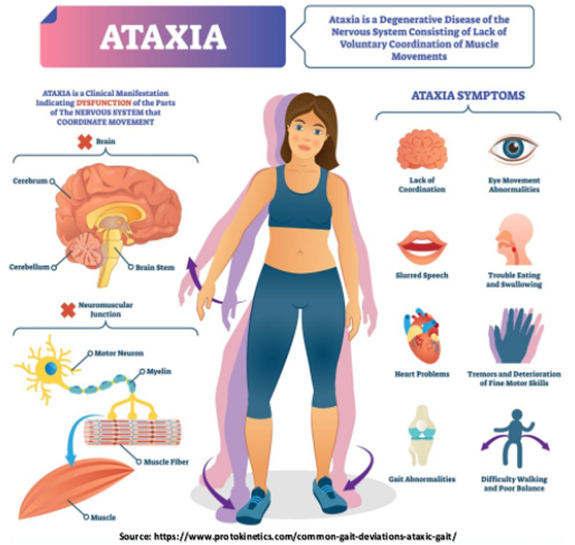Unsteady gait – the best treatment at Dr Raos hospital, Guntur
Introduction
If you have ever felt unsteady on your feet, you are not alone. An unsteady gait is a common symptom that can be caused by a variety of underlying conditions. It can be a temporary issue or a chronic problem. There are many different causes of an unsteady gait. It can be caused by an injury, a neurological condition, or a side effect of certain medications. It can also be a sign of balance problems or inner ear issues. An unsteady gait can range from mild to severe. In some cases, it may only be noticeable when you are tired or under stress. In other cases, it can be so severe that you are unable to walk without assistance. If you are experiencing an unsteady gait, it is important to see your doctor for a proper diagnosis. There are many effective treatments available that can help improve your symptoms and quality of life. Dr Raos hospital is the best neurological center in Guntur and Andhra Pradesh and stands the best stroke or paralysis treatment hospital in India. Contact us @ 9010056444 or 9010057444 for reducing your disability and faster recovery from the unsteady gait or stroke. Dr Rao is also the best neurosurgeon, best spine surgeon and best stroke or paralysis neurologist in Guntur and Andhra Pradesh.
causes
There are many possible causes of unsteady gait. Some causes are more common than others.
Common causes include:
– Muscle weakness
– Balance problems
– Inner ear problems
– Nerve problems
– Joint problems
– Foot problems
– Alcohol use
Less common causes include:
– Stroke
– Parkinson’s disease
– Multiple sclerosis
– Brain tumor
types
There are three types of unsteady gait:
1. Ataxic: This is the most common type of unsteady gait and is caused by problems with the nervous system. People with ataxic gait often have a wide-based stance and their steps are irregular and uncoordinated.
2. Spastic: This type of unsteady gait is caused by muscle stiffness or spasms. People with spastic gait often have a jerky or stiff walk and may drag their feet.
3. Parkinsonian: This type of unsteady gait is caused by problems with the brain chemical dopamine. People with parkinsonian gait often have a slow, shuffling walk and may freeze in place when they try to turn.
diagnosis
There are a few different ways that doctors can diagnose unsteady gait.
One way is by doing a physical examination and asking about your medical history. The doctor will look for any problems with your balance, coordination, or strength.
They will also ask about any medications you’re taking and if you’ve had any falls recently.
Another way to diagnose unsteady gait is with tests that look at how well your nervous system is working.
These tests can include blood tests, MRI scans, and CT scans.
Doctors may also use special tests to see how well you walk and balance yourself.
treatment
There is no one-size-fits-all answer to the question of how to treat unsteady gait, as the best approach will vary depending on the underlying cause. However, there are some general principles that can be followed.
If the cause is a medical condition, such as Parkinson’s disease or a stroke, then treatment will focus on managing that condition. This may involve medication, physiotherapy, and other forms of support.
If the cause is an injury, such as a broken bone or a sprained ankle, then treatment will focus on healing the injury and helping the person to regain their strength and balance. This may involve rest, ice, elevation, and physical therapy.
In some cases, unsteady gait may be caused by a combination of factors. In this case, treatment will focus on addressing all of the contributing factors. This may involve lifestyle changes, such as improving diet and exercise habits, as well as medical interventions and therapies.
living with it
“Living with an unsteady gait can be difficult, but there are ways to manage it.
First, it is important to identify the underlying cause of your unsteady gait. Once the cause is known, you can work with your healthcare team to develop a treatment plan.
There are also many assistive devices that can help you manage your condition and improve your mobility.
Finally, it is important to stay as active as possible and maintain a healthy lifestyle. This will help you stay strong and independent.”
Conclusion
In conclusion, unsteady gait can be a symptom of many different underlying conditions. It is important to consult with a medical professional to determine the cause of your unsteady gait and to develop a treatment plan. There are many different treatments available depending on the underlying condition causing your unsteady gait. With proper diagnosis and treatment, many people are able to live relatively normal lives despite having an unsteady gait. . Dr Raos hospital is the best neurological center in Guntur and Andhra Pradesh and stands the best stroke or paralysis treatment hospital in India. Contact us @ 9010056444 or 9010057444 for reducing your disability and faster recovery from the unsteady gait or stroke. Dr Rao is also the best neurosurgeon, best spine surgeon and best stroke or paralysis neurologist in Guntur and Andhra Pradesh.

